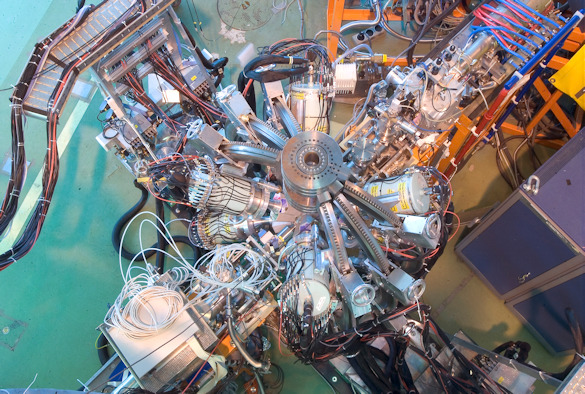Coulomb excitation of pear-shaped radon-222 at CERN

Experiments using radioactive ion beams have been performed by our Nuclear Physics group to study pear-shaped (octupole-deformed) nuclei, and the results published in Physical Review C. The radioactive 222Rn ions were accelerated to 10% of the speed of light in the HIE-ISOLDE linear accelerator at CERN. The nature of quadrupole (rugby ball) and octupole collectivity in 222Rn was investigated by making use of the intense electromagnetic (Coulomb) forces that arise when the radon nuclei come into close proximity to nickel and tin nuclei in the stationary target. Following this "Coulomb Excitation", gamma-rays are emitted from the radon nuclei that were detected using the Miniball gamma-ray spectrometer, see Figure above.
This is the third paper that details the results of a series of experiments undertaken in 2018 and follows previous publications in Nature Communications and Physical Review Letters. The present results are only the second ever measurement of octupole moments in radon nuclei (Z = 86) and add further weight to the interpretation that they are so-called “οctupole vibrational" nuclei and do not possess a permanent pear-shape.